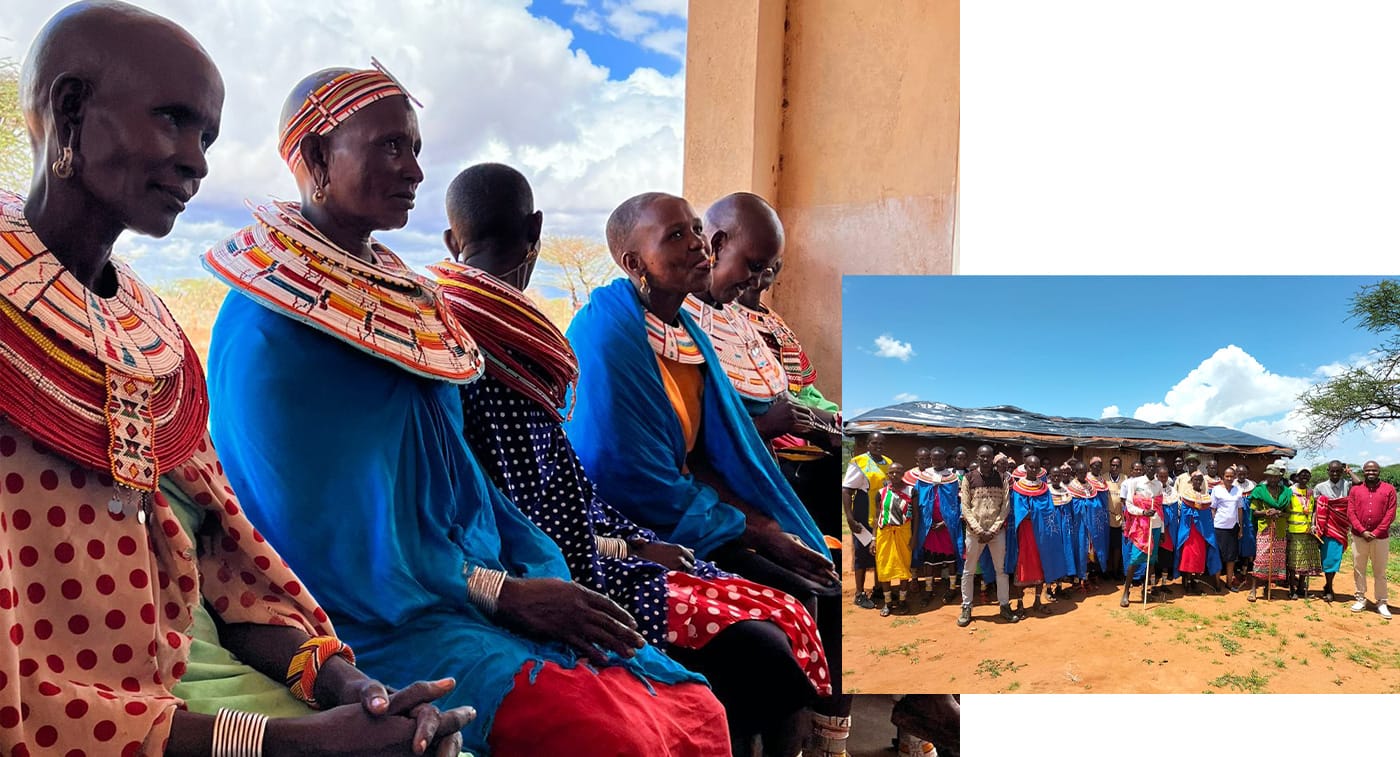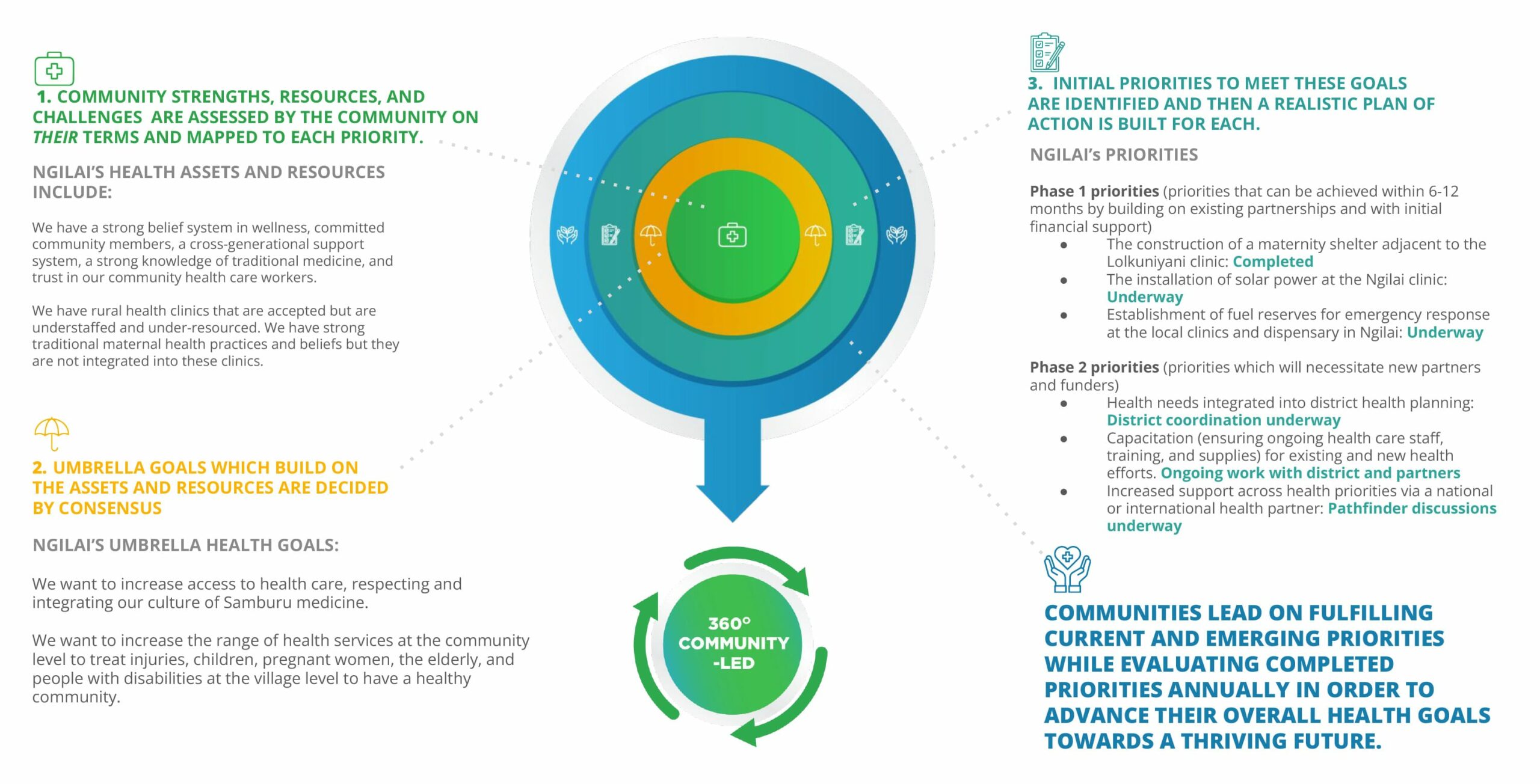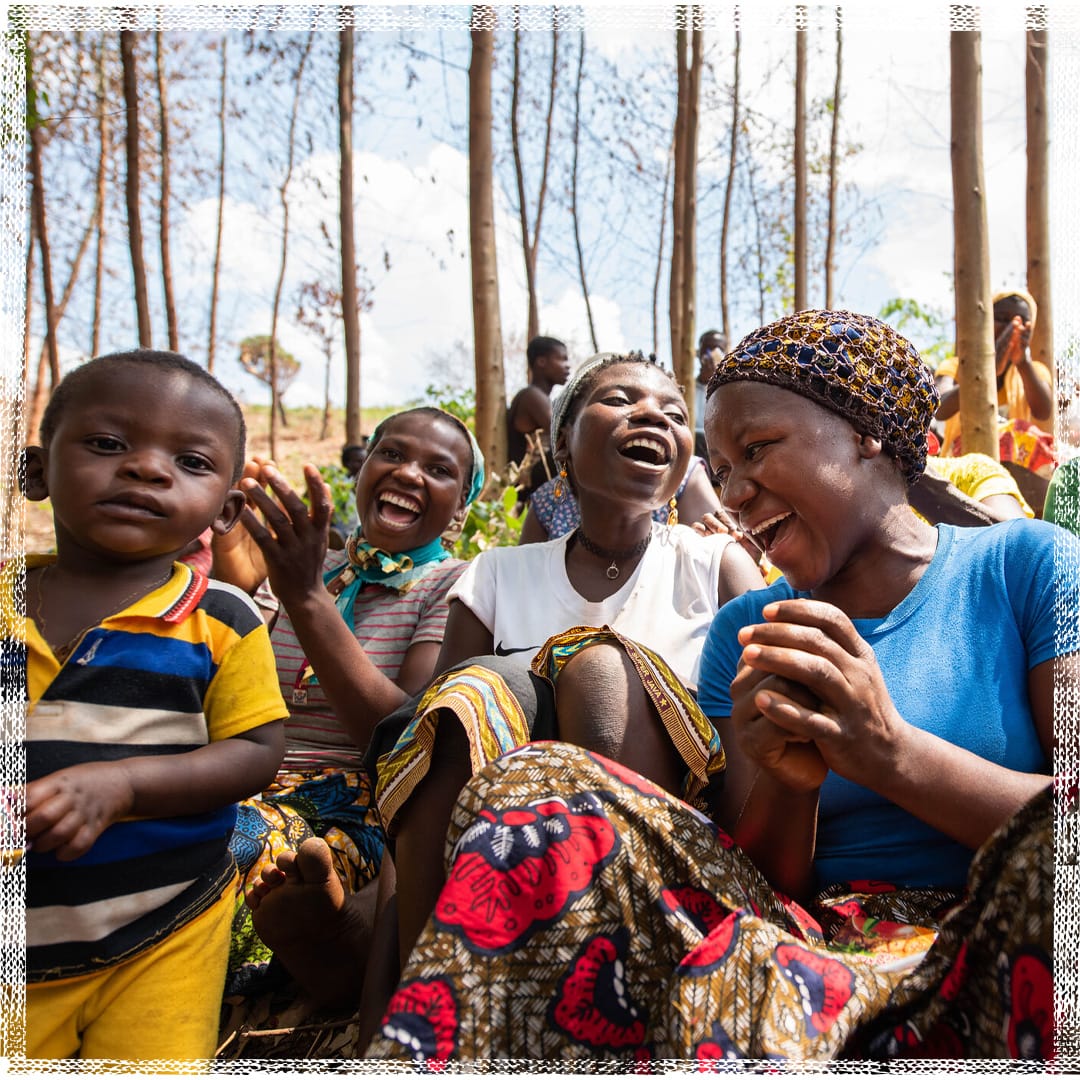
Ngilai community members mark the official opening of the new maternity shelter, envisioned, built, and completed as a Thriving Future priority | Roshni Lodhia/Legado
360° COMMUNITY-LED PRIORITY
Thriving Futures priorities are a unique outcome of the Thriving Futures process and represent the core of a 360° Community-Led approach. To create Thriving Futures priorities, community partners map their strengths and resources, yielding priorities that center on one dimension (human health, education, etc) but intersect multiple dimensions.
THE DESIRE AND RIGHT TO GOOD HEALTH IS PRESENT IN EVERY COMMUNITY AROUND THE WORLD.
How the Ngilai Conservancy Community in Northern Kenya Used the Thriving Futures Process to Drive Their Health Care Future

Health Across Legado’s Programming
Below is snapshot of Legado’s current work across all of our health programming , shown with additional details unique to each community on the intersectionality of their health goals across the realization of their Thriving Future.
KENYA:
As shared above, our partners in the Ngilai community have completed a maternity shelter and are now working to install solar power at their local clinic while simultaneously advancing their health agenda with the regional health office and international NGO Pathfinder.
In Ngilai, Samburu community members link their health to the success of their children in school, to their ability to steward their rangelands and sustain their livelihoods, and to the maintenance of their cultural traditions. The specific focus on maternal health is also tied to all of the above and to the overall goal of healthy families led by healthy women.
MOZAMBIQUE:
During COVID-19, community/local partners prioritized immediate/health services resulting in a 225% increase in community health care workers during that critical time. Namuli communities are currently developing their plan for their first community health center— filling a vacuum of health services across a vast and under-resourced landscape.
The primary driver of forest loss, a key ecological risk on Mount Namuli, is driven by the need to pay for health care. People depend on selling wood, producing charcoal, and clearing land for agriculture as sources of income. The community identified health priorities in tandem with alternative non-forest based livelihoods and regenerative agriculture in lowland fields to reduce pressure on the forest. In addition, the Lomwe people of Mount Namuli are working to preserve their forest for its traditional medical resources.
PERU:
While our Futuros Vivos: Megantoni-Machiguenga program has just begun, we are already seeing health priorities emerge around maternal health, dengue management, and increased local health services (clinics, transport to clinics, community health care support).
Indigenous communities in the Megantoni-Machiguenga Landscape have strong traditional medicine practices reliant on maintaining a healthy ecosystem. Thus, human health and environmental health are ever linked. There is an ongoing movement to integrate the cultural medical knowledge inside of the school systems to share these practices intergenerationally as it also creates important livelihoods in the region.

